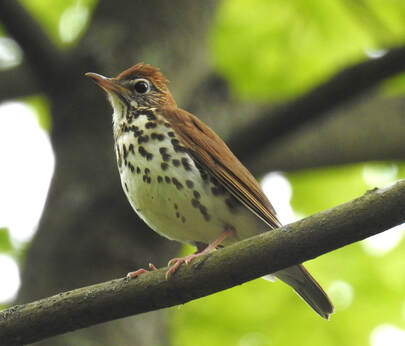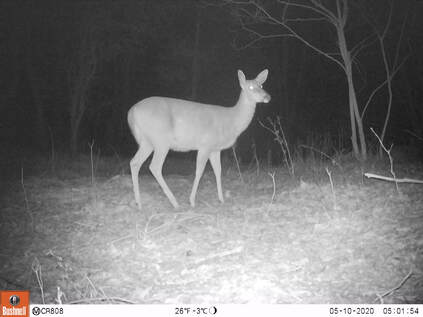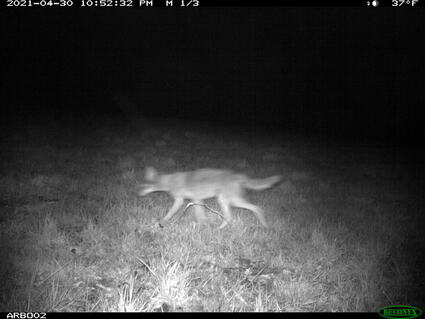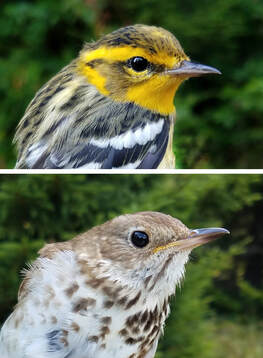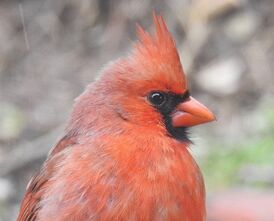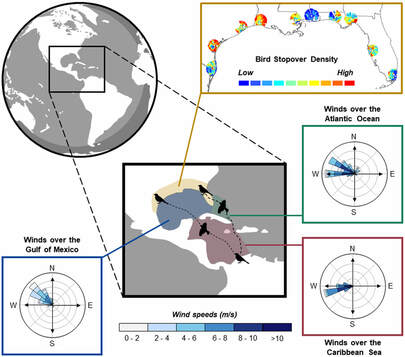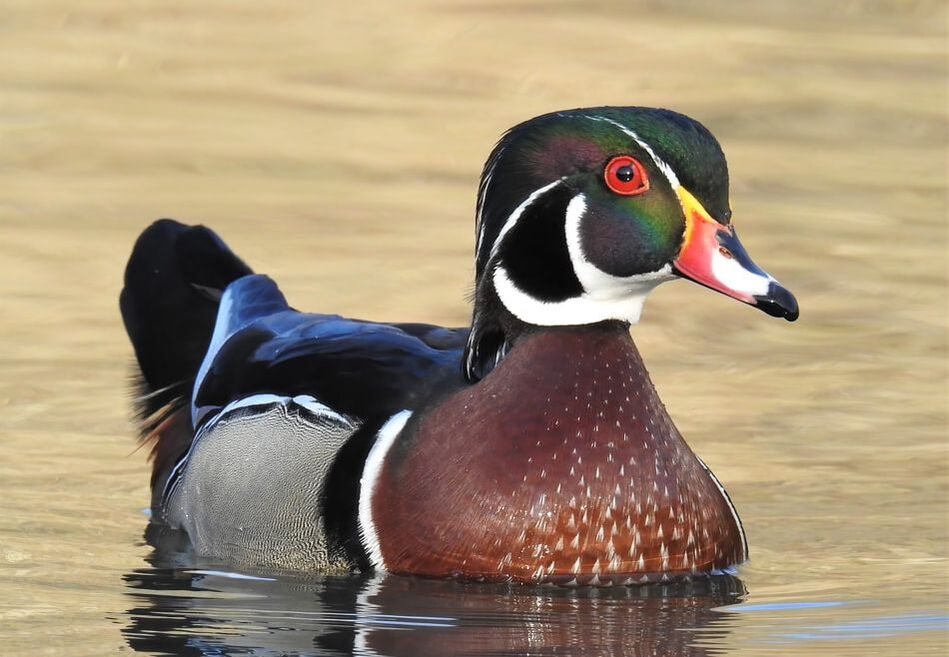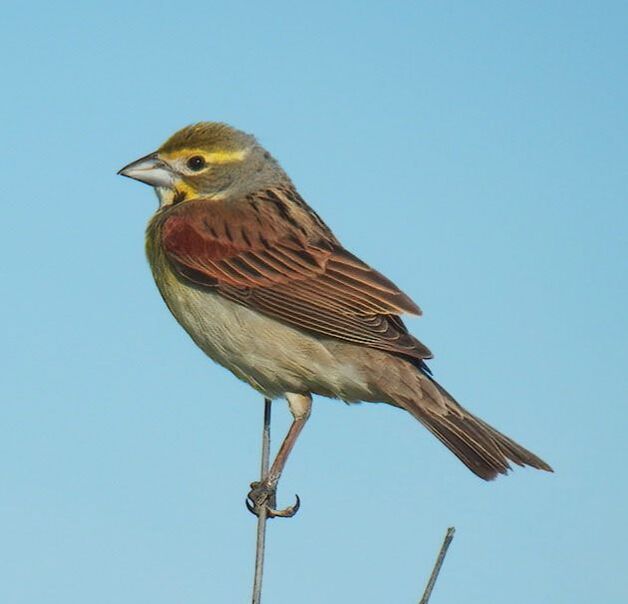DOCTORAL DISSERTATION RESEARCH
CHAPTER 1: POTENTIAL EFFECTS OF CLIMATE AND LAND COVER CHANGE
This comprehensive review chapter focused on projected and documented effects of climate change and land cover change on forest songbirds in the Appalachian Mountains. I also presented an in-depth case study that examined the relative influence of climate and land cover on 14 forest songbird species distributions in the Appalachian Mountains in past decades and projected species distributions in 100 years using future climate models and land cover models.
Status: Research complete (see full dissertation), with manuscript in progress.
This comprehensive review chapter focused on projected and documented effects of climate change and land cover change on forest songbirds in the Appalachian Mountains. I also presented an in-depth case study that examined the relative influence of climate and land cover on 14 forest songbird species distributions in the Appalachian Mountains in past decades and projected species distributions in 100 years using future climate models and land cover models.
Status: Research complete (see full dissertation), with manuscript in progress.
CHAPTER 2: AVIAN SPECIES CHANGES ACROSS TIME
In this chapter, I studied changes in forest songbird diversity and abundance across time and along both elevational and latitudinal gradients within the Appalachian Mountains, focusing on climate change as a potential mechanism for change. My data comprised 20 years of bird surveys from the Hubbard Brook Experimental Forest in the Northern Appalachians, the Monongahela National Forest in the Central Appalachians, and the Pisgah and Nantahala National Forests in the Southern Appalachians.
Status: Research complete (see full dissertation), with manuscript in progress.
In this chapter, I studied changes in forest songbird diversity and abundance across time and along both elevational and latitudinal gradients within the Appalachian Mountains, focusing on climate change as a potential mechanism for change. My data comprised 20 years of bird surveys from the Hubbard Brook Experimental Forest in the Northern Appalachians, the Monongahela National Forest in the Central Appalachians, and the Pisgah and Nantahala National Forests in the Southern Appalachians.
Status: Research complete (see full dissertation), with manuscript in progress.
CHAPTER 3: BIRD COMMUNITIES IN HARVESTED VS UNHARVESTED FOREST LANDSCAPES
The purpose of this study was to compare long-term avian community responses in harvested and unharvested sites within a heavily forested Central Appalachian landscape. Using historical point count survey data and nest monitoring data from the MeadWestvaco Wildlife and Ecosystem Research Forest and Monongahela National Forest in West Virginia, I focused on how harvest intensity affects forest songbird diversity, abundance, and nest success over time.
Status: Research complete (see full dissertation), with manuscript in progress.
The purpose of this study was to compare long-term avian community responses in harvested and unharvested sites within a heavily forested Central Appalachian landscape. Using historical point count survey data and nest monitoring data from the MeadWestvaco Wildlife and Ecosystem Research Forest and Monongahela National Forest in West Virginia, I focused on how harvest intensity affects forest songbird diversity, abundance, and nest success over time.
Status: Research complete (see full dissertation), with manuscript in progress.
CHAPTER 4: MULTI-SPECIES AVIAN OCCUPANCY OF WILDLIFE OPENINGS
For my final chapter, I aimed to understand how and potentially why avian communities in wildlife openings vary within a heavily forested landscape (Monongahela National Forest) located in the Central Appalachians. In particular, I used a combination of in-person game bird surveys, game cameras, autonomous recording units, community-wide avian point count surveys, community-wide avian transect surveys, vegetation surveys, and GIS data to identify the site- and landscape-level characteristics of wildlife openings that support a diversity of game birds, breeding songbirds, and post-breeding songbirds.
Status: Research complete (see full dissertation), with manuscript in progress.
For my final chapter, I aimed to understand how and potentially why avian communities in wildlife openings vary within a heavily forested landscape (Monongahela National Forest) located in the Central Appalachians. In particular, I used a combination of in-person game bird surveys, game cameras, autonomous recording units, community-wide avian point count surveys, community-wide avian transect surveys, vegetation surveys, and GIS data to identify the site- and landscape-level characteristics of wildlife openings that support a diversity of game birds, breeding songbirds, and post-breeding songbirds.
Status: Research complete (see full dissertation), with manuscript in progress.
ADDITIONAL RECENT / ONGOING RESEARCH PROJECTS
|
EFFECTIVENESS OF WOOD THRUSH MANAGEMENT GUIDELINES
My objectives for this study are to: (1) use an integrated population model incorporating abundance, persistence, and nest success to evaluate how wood thrushes in West Virginia respond to specific landscape characteristics, desired habitat conditions, and recommended forest management practices (as delineated by Lambert et al. 2017), and (2) use multi-species occupancy modeling to determine how closely wood thrush co-vary with other forest songbirds. Status: Research in progress. |
PEARLY-EYED THRASHERS IN PUERTO RICO
Working with partners from Rainforest Connection, we determined the distribution of the Pearly-eyed Thrasher, an opportunistic colonizing bird species, and its interactions with endemic species of conservation concern across environmental and anthropogenic gradients in Puerto Rico.
Status: Research complete, with manuscript in progress.
Working with partners from Rainforest Connection, we determined the distribution of the Pearly-eyed Thrasher, an opportunistic colonizing bird species, and its interactions with endemic species of conservation concern across environmental and anthropogenic gradients in Puerto Rico.
Status: Research complete, with manuscript in progress.
DETECTION RATES OF WHITE-TAILED DEER IN THE PRESENCE OF COYOTES
In collaboration with my co-advisor (Dr. Chris Rota), fellow Rota lab graduate students, and Dr. Laura Gigliotti from the West Virginia Cooperative Fish and Wildlife Research Unit, we quantified the effect of predator species presence on camera trap detection rates of prey species, using coyotes and white-tailed deer in Central Appalachian forests as a model predator-prey system.
Status: Complete, with one first-authored publication (see "White-tailed deer detection rates increase when coyotes are present").
In collaboration with my co-advisor (Dr. Chris Rota), fellow Rota lab graduate students, and Dr. Laura Gigliotti from the West Virginia Cooperative Fish and Wildlife Research Unit, we quantified the effect of predator species presence on camera trap detection rates of prey species, using coyotes and white-tailed deer in Central Appalachian forests as a model predator-prey system.
Status: Complete, with one first-authored publication (see "White-tailed deer detection rates increase when coyotes are present").
A NEW FLEXIBLE AGE-AT-HARVEST MODEL
In collaboration with my co-advisor (Dr. Chris Rota), we proposed a novel Bayesian modeling approach to estimate survival rates of wildlife and fisheries populations from age-at-harvest data.
Status: Complete, with one co-authored publication (see "A flexible Bayesian approach for estimating survival probabilities from age-at-harvest data").
In collaboration with my co-advisor (Dr. Chris Rota), we proposed a novel Bayesian modeling approach to estimate survival rates of wildlife and fisheries populations from age-at-harvest data.
Status: Complete, with one co-authored publication (see "A flexible Bayesian approach for estimating survival probabilities from age-at-harvest data").
|
BIRD COMMUNITIES IN CENTRAL APPALACHIAN
RED SPRUCE FORESTS I partnered with a U.S. Forest Service Northern Research Station scientist to run community-level analyses and indicator species analyses to identify unique bird communities and individual bird species associated with red spruce-northern hardwood ecosystems in the Central Appalachians. We found that red spruce and northern hardwood forest types had distinct bird communities, and 11 breeding bird species were strongly and consistently associated with red spruce forest. Status: Complete, with one first-authored publication (see "Distinct forest bird communities are strongly associated with red spruce-northern hardwood ecosystems in Central Appalachia, USA"). |
PENALIZED LIKELIHOOD FOR MULTI-SPECIES OCCUPANCY MODELS
In collaboration with my co-advisor (Dr. Chris Rota), we developed and proposed a new statistical technique (penalized likelihood for multi-species occupancy models) to improve predictions of species interactions.
Status: Complete, with one first-authored publication (see "A penalized likelihood for multispecies occupancy models improves predictions of species interactions").
In collaboration with my co-advisor (Dr. Chris Rota), we developed and proposed a new statistical technique (penalized likelihood for multi-species occupancy models) to improve predictions of species interactions.
Status: Complete, with one first-authored publication (see "A penalized likelihood for multispecies occupancy models improves predictions of species interactions").
|
BACKYARD BIRD SPATIAL ECOLOGY
During the summer of 2018, I participated in a research internship with a U.S. Forest Service scientist studying urban bird ecology in western Massachusetts. My research involved attaching GPS tags to northern cardinals, a common backyard bird, to study daily movements and home range sizes. I aimed to figure out how many backyards were being used and which features may explain those patterns. Status: Complete, with preliminary data provided for a larger urban ecology study. |
MASTER'S THESIS RESEARCH
|
LANDBIRD STOPOVER ECOLOGY
For my Master's thesis, I used weather surveillance radars to better understand the stopover ecology of nocturnally-migrating landbirds along the U.S. coast of the Gulf of Mexico. I quantified the influence of broad-scale weather and wind patterns over the Gulf of Mexico on spring stopover distributions of birds along the entire coast. I also determined whether local stopover site function and duration varies from autumn to spring, using 19 sites in southern Mississippi. Status: Completed, with two first-authored publications and two co-authored publications (see Publications). |
UNDERGRADUATE RESEARCH
SALMON AND BIRDS
From June to August 2015, I participated in a research internship with the National Oceanic and Atmospheric Administration (NOAA) Northwest Fisheries Science Center as part of the NOAA Hollings Scholarship program. I investigated how anadromous Pacific salmon affect avian community metrics in the Cedar River watershed.
Status: Completed, with one co-authored publication (see "Effects of subsidies from small anadromous Pacific salmon populations on stream and riparian food webs are mediated by channel gradient").
From June to August 2015, I participated in a research internship with the National Oceanic and Atmospheric Administration (NOAA) Northwest Fisheries Science Center as part of the NOAA Hollings Scholarship program. I investigated how anadromous Pacific salmon affect avian community metrics in the Cedar River watershed.
Status: Completed, with one co-authored publication (see "Effects of subsidies from small anadromous Pacific salmon populations on stream and riparian food webs are mediated by channel gradient").
|
WATERBIRD COMMUNITIES
I conducted waterbird surveys at two created wetlands in the Pleasant Creek Wildlife Management Area in north-central West Virginia from May 2014 to May 2016. I then used that survey data to complete an Honors senior thesis that compared waterbird diversity, species composition, density, and use between the two wetlands. Status: Completed, with one first-authored publication (see "Winter waterbird community composition and use at created wetlands in West Virginia, USA"). |
RIPARIAN FOREST SALAMANDERS
As a sophomore and junior, I wrote a review paper for a Special Issue titled "The 24th IUFRO World Congress: Session 13 Salamanders: World Icons of Aquatic Biodiversity in Forests", published in the peer-reviewed journal Forests. The review covered environmental and anthropogenic factors influencing salamanders in riparian forests.
Status: Completed, with one first-authored publication (see "Environmental and anthropogenic factors influencing salamanders in riparian forests: A review").
As a sophomore and junior, I wrote a review paper for a Special Issue titled "The 24th IUFRO World Congress: Session 13 Salamanders: World Icons of Aquatic Biodiversity in Forests", published in the peer-reviewed journal Forests. The review covered environmental and anthropogenic factors influencing salamanders in riparian forests.
Status: Completed, with one first-authored publication (see "Environmental and anthropogenic factors influencing salamanders in riparian forests: A review").
|
GRASSLAND SONGBIRD TERRITORIES
During the summer of 2014, I participated in the Research Experiences for Undergraduates program at Kansas State University. I conducted an independent research project on the effects of patch-burn grazing and other grassland management strategies on the territory sizes of dickcissels, a common grassland songbird. Status: Completed, with one co-authored publication (see "Effects of patch-burn grazing on breeding density and territory size of Dickcissels"). |
HIGH SCHOOL RESEARCH
STREAM POLLUTANT COST-BENEFIT ANALYSIS
As a high school senior in the Science and Mathematics Academy, I worked with a mentor from Chesapeake Environmental Management, Inc., a private environmental consulting agency, to conduct a research project focused on finding the most cost-effective way to reduce sediment and nutrient loading into the streams of a local farm.
Webpage last updated: 3.22.2024
As a high school senior in the Science and Mathematics Academy, I worked with a mentor from Chesapeake Environmental Management, Inc., a private environmental consulting agency, to conduct a research project focused on finding the most cost-effective way to reduce sediment and nutrient loading into the streams of a local farm.
Webpage last updated: 3.22.2024


